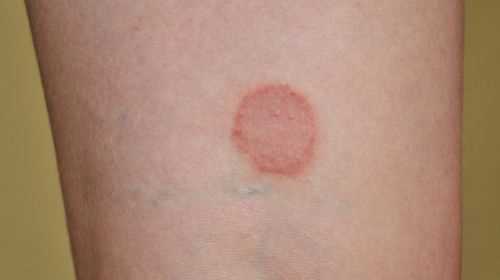Plantar warts tend to appear on the soles of the feet, balls of the feet or toes. In contrast to other warts, they grow thorn-like in depth and can therefore be painful and very persistent. How to treat and remove plantar warts.
Plantar warts, like most other types of warts, are rather harmless. They are caused by viruses and tend to occur on the feet, which is why they are also known as foot warts or plantar warts. The term is derived from “planta”, the Latin word for the sole of the foot. The medically correct term is verrucae plantares.
Article content at a glance:
What do plantar warts look like?
The warts appear on the surface of the skin as flat, rounded skin growths that are covered by a layer of cornea and are gray-yellow in color. For the layman, they can sometimes hardly be distinguished from corns, especially if the plantar warts are on the toe. But if you look closely, you can usually see tiny black dots or lines in the wart, which are caused by small hemorrhages.
A plantar wart does not have to be accompanied by other symptoms in addition to the punctual thickening of the skin. However, since it occurs primarily in areas of the soles of the feet that are exposed to high pressure, for example the heel or ball of the foot, symptoms can also include severe, stabbing pain when walking. This can happen when the extensions of the plantar wart reach the ends of nerves. This is why the plantar wart is also known as a piercing wart.
Another form of plantar warts are so-called mosaic warts, which, in contrast to plantar warts, are flat and do not extend deep. They therefore usually do not cause pain, but can occur in large numbers and cover the soles of the feet like beds.
Removing plantar warts: how to treat plantar warts
Virus warts often go away on their own, so treatment for plantar warts is not always necessary. As long as the wart does not cause any symptoms, one can wait and see: around 60 percent of all viral warts resolve on their own within two years of their appearance.
How successful the treatment of a plantar wart will be cannot be predicted. The wart therapy is often very tedious. Treatment is also made more difficult by the fact that after a plantar wart has been successfully removed, new ones often appear.
Patches and solutions against plantar warts
In the pharmacy there are acidic plasters or solutions that can be used to remove plantar warts. Salicylic acid is often used; other acids such as trichloroacetic acid or lactic acid are also possible. In most cases, the preparations also contain active substances that inhibit viruses (antivirals), which slow down the growth of the wart. However, they require a prescription.
Acidic plasters should remain on the plantar wart for a few days and therefore adhere well to the skin. The solutions are applied several times a day (two to four times) and often leave a thin, lacquer-like film on the wart. Before reapplication, it should be peeled off or carefully rubbed off.
About every three days, the upper, whitish horny layer of the wart, softened by the acid, is carefully removed – for example with a file or a callous plane. It is best to soak the plantar wart in warm water beforehand. Diabetics with sensory disturbances on the feet should not take the removal of the softened plantar cornea into their own hands.
For this procedure, which is known as keratolysis, those affected need patience and perseverance: It can take six to twelve weeks for the plantar wart to completely disappear, even if pain relief usually occurs after the first removal of the horny layer.
Cryotherapy: freeze plantar warts
In cryotherapy, the doctor applies liquid nitrogen to the plantar wart. This freezing of the warts causes the wart tissue to die off and a blister to form under the wart, causing the wart to lift and eventually fall off. While one application is usually sufficient for common warts, up to four treatments are required for deep-growing plantar warts, which should be done about two weeks apart.
Remove plantar warts with home remedies?
Thuja extract: The treatment is carried out with tinctures made from thuja extracts, which are applied several times a day until the wart has healed. In a study, an effectiveness against warts could be proven, which is based on the fact that ingredients of the plant extracts trigger the production of inflammation mediators in the skin cells. This refers to the body’s own substances that trigger and maintain inflammatory reactions and thereby stimulate the immune system.
There are also reports of success for the treatment of plantar warts Tea tree oil. The home remedy, which has been proven to have an antimicrobial effect, is applied to the wart one to three times a day. The problem with this, however, is that the tea tree oil can cause contact eczema. Dermatologists therefore advise against treating warts with tea tree oil. In addition, the home remedy has an antibacterial effect, but warts are caused by viruses.
Rubbing garlic, onion juice, banana peel or urine are well-known home remedies, but there is no evidence that they are effective.
Etch plantar warts and remove them surgically
Another treatment option is to burn the plantar wart with, for example, monochloroacetic acid or silver nitrate. The acid is dabbed on or applied with a pencil. Due to the strong effect, however, the surrounding healthy skin tissue can be burned and this can lead to pain.
A stubborn and painful plantar wart can be surgically removed with a scalpel or a sharp spoon under local anesthesia. However, cutting out a plantar wart that has grown deep into the foot leaves a painful wound that takes some time to heal. In addition, new plantar warts often appear in the area.
Lasers against warts: an overview of the various procedures
An alternative to cutting out is to laser the warts. There are various methods for doing this. During treatment with the CO laser, the wart is also cut out with the aid of a laser beam. This procedure also requires local anesthesia and leaves painful wounds. In addition, several sessions are necessary, especially with deep-rooted plantar warts.
In contrast, the dye laser treatment aims to close the small blood vessels that supply the wart. This requires several treatments at intervals of one month. There is no open wound and the wart usually stayed away without scars. However, the depth of penetration of the dye laser is not sufficient for deep plantar warts and the treatment can be painful.
Human papillomaviruses (HPV) cause plantar warts
As with almost all other types of warts, plantar warts are caused by an infection with Human papillomavirus (HPV). The only exception are the warts, which are caused by smallpox viruses. Around 100 different HPV types are known, some of which are known as high-risk types can also cause cancer, such as cervical cancer.
The triggers for plantar warts and most other skin warts, on the other hand, are of the harmless type. These HPV viruses are low-risk types that are usually not associated with tumor formation.
Plantar warts are contagious
Because they are caused by viruses, plantar warts are highly contagious. The viruses can penetrate the skin through fine injuries or cracks that are barely visible to the naked eye. Even with softened skin, for example after a visit to a swimming pool or a long bath, the pathogens have an easy time of it. Viruses benefit from a warm, humid environment. Public swimming pools and saunas are therefore ideal places to spread.
It often takes weeks or months after the infection for the wart to form. The reason why the skin growths in plantar warts grow inwards and not outwards as in other types of warts is that they are exposed to high pressure on the soles of the feet. This creates a horn cone that grows deep into the skin and cause severe pain.
Plantar warts in children
Children and adolescents are a special risk group who are often infected with plantar warts. On the one hand, this is due to the fact that their immune system is not yet fully developed and has nothing to counter the virus. On the other hand, children especially prefer to romp around in outdoor and indoor pools and like to run around for hours with wet feet. You should therefore also make sure that children disinfect their feet with the foot shower after visiting the swimming pool, if possible, and dry them thoroughly after bathing.
Recognize plantar warts – a visual diagnosis is usually sufficient
Even if a layperson may find it difficult to recognize plantar warts, experienced general practitioners or dermatologists usually only need to take a look at their external, characteristic appearance to make a diagnosis. Viewing under a dermatoscope or reflected light microscope, as is also used for the early detection of skin cancer, can confirm the diagnosis. This technique makes it possible to see deeper layers of the wart and the surrounding skin.
If the wart grows particularly quickly, a biopsy (tissue sample) can be taken for examination. This is especially recommended for people with a weakened immune system in order to rule out a malignant skin disease.
How can you prevent plantar warts?
If a plantar wart has formed, it is important to prevent new warts from developing on the foot or other parts of the body. Hygiene measures are crucial here. This includes washing and disinfecting your hands after treating warts. Towels and other textiles that have come into contact with the wart, such as socks, should be washed at 60 degrees – this renders the viruses harmless.
In addition, those affected should not share towels or washcloths with others. At home and in public institutions, they should not walk barefoot to prevent the spread of the plantar warts virus.
Slippers should always be worn in public swimming pools, saunas or changing rooms. For the prevention of warts It also helps to dry your feet carefully after bathing or showering. An intact immune system can prevent a plantar wart from growing, even in direct contact with HPV. With a healthy diet, sufficient exercise and avoidance of stress, you can make your immune system strong.
.



